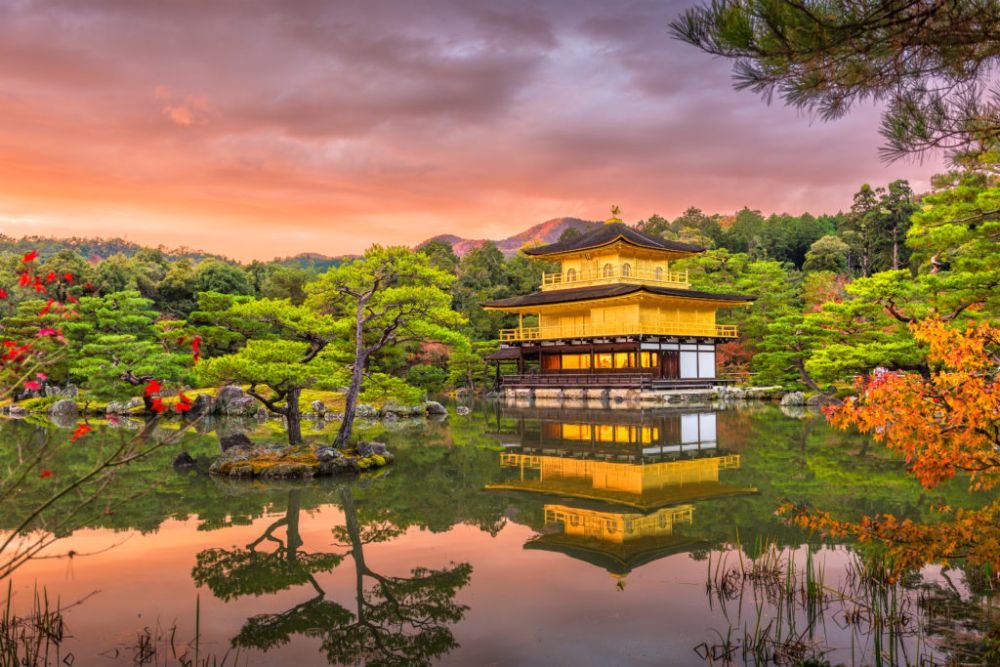

Kinkakuji, known as the Golden Pavilion, is one of Japan's most iconic and historically significant temples, attracting visitors from around the globe. The temple's history dates back to 1397, when it was originally constructed as a retirement villa for Shogun Ashikaga Yoshimitsu. Quickly gaining recognition for its breathtaking design, it became a Zen temple of the Rinzai sect upon the shogun's death, as per his will.
The tourism history of Kinkakuji can be traced to the Edo period when Japan's roads and infrastructure began to develop, and domestic travel for leisure became increasingly popular. However, it was not until the Meiji Restoration in the late 19th century that Kinkakuji and Kyoto experienced a significant surge in tourism. The restoration led to the reopening of Japan to the world after over two centuries of relative isolation under the Tokugawa shogunate, and foreign visitors began to flock to the country's cultural treasures.
Kinkakuji's real boom in tourism came in the 20th century, particularly following World War II. The pavilion was rebuilt in 1955 after a 1950 arson incident, restoring its former glory and enhancing its appeal as a must-visit destination. It was during this time that the pavilion was clad entirely in gold leaf, a feature that has made it a symbol of Kyoto and a staple image in travel brochures and guidebooks.
In the 21st century, Kinkakuji continues to be a heavyweight in the tourism industry of Kyoto. The temple's golden reflection shimmering across the pond, set against a backdrop of meticulously maintained gardens, provides one of the most photographed scenes in Japan. With the ease of international travel and the rise of social media platforms, Kinkakuji has seen a significant increase in international visitors.
The latest trend in tourism at Kinkakuji and across Japan includes a strong focus on cultural immersion and sustainability. Visitors are increasingly seeking authentic experiences that go beyond the visual splendor, delving into the history, cultural significance, and spiritual aspects of the site. Tourist services have adapted by offering guided tours in multiple languages, cultural workshops, and more in-depth educational materials about Kinkajuji's history and Zen Buddhism.
During certain times of the year, such as the cherry blossom season in spring and the autumn foliage season, Kinkakuji witnesses a peak in visitor numbers. Efforts have been made to manage the large crowds, including timed entry tickets and other measures to enhance the visitor experience while preserving the tranquility and integrity of the historic site.
Furthermore, the Japanese government, in preparation for events such as the Tokyo 2020 Olympics (postponed to 2021), has been proactive in promoting tourist destinations like Kinkakuji. Infrastructural improvements, multilingual signage, and enhanced visitor centers are all part of the efforts to cater to the international market.
Kinkakuji stands as a testament to Japan's rich heritage and remains a pillar of Kyoto's tourism industry. As one of the most visited cultural sites in Japan, the Golden Pavilion's luster continues to shine brightly, drawing visitors from around the globe to witness its splendor.